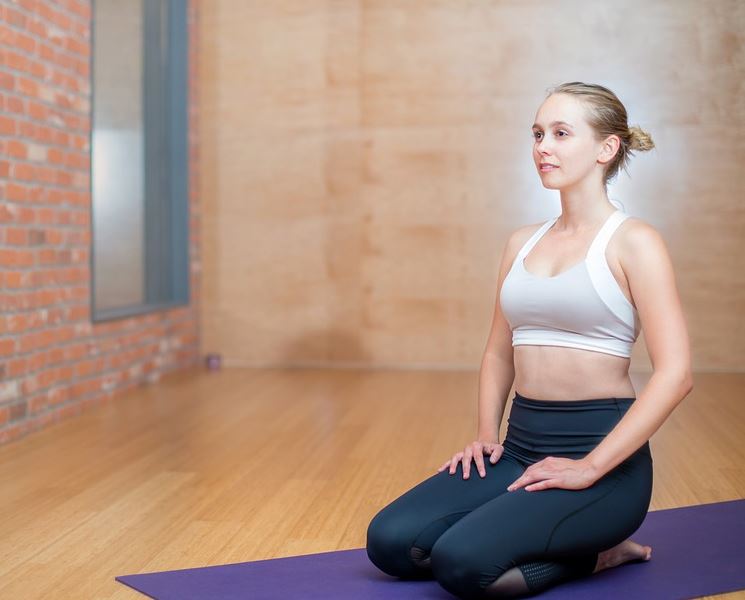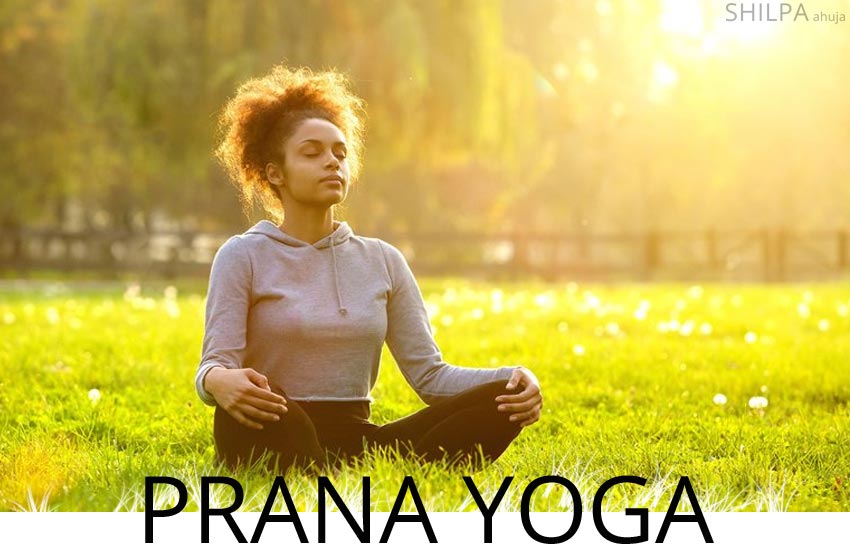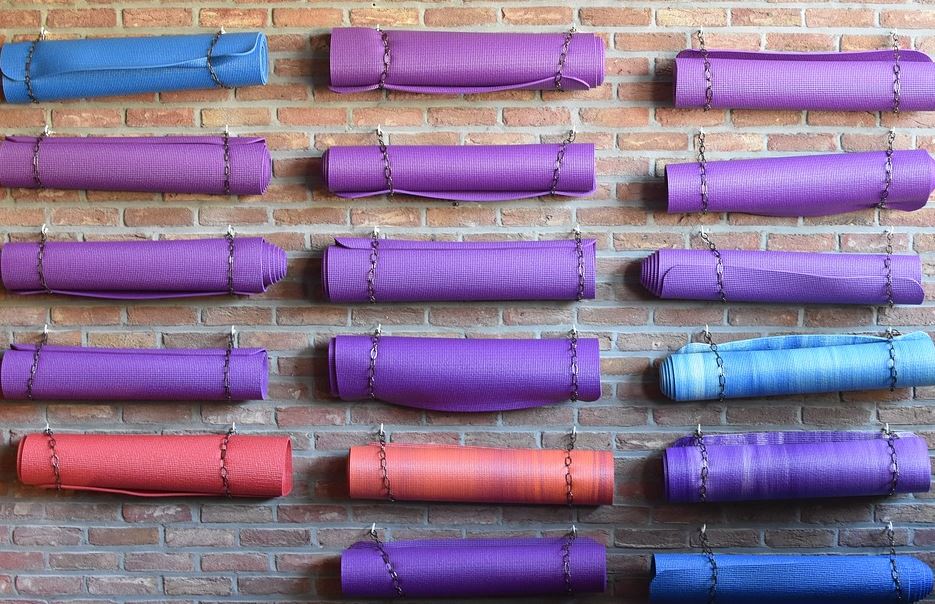From pranayama breathing exercises to meditation yoga to stress relieving techniques, here’s everything you need to know about prana yoga!
Prana Yoga Definition: What is Prana Yoga?
Prana yoga forms an integral part of yogasana. Just like hatha yoga is for physical wellness, prana yoga is for mind. In yogasana, it is believed that an energy exists within and around the physical body. So, when you breathe in, prana flows through the arteries or energy paths called nadi (flow) inside our body. And when we expand the breath while inhaling and exhaling, we improve the quality of the vital force within and around us.
What is Prana?
Prana is the vital air or breath of the human body in Hinduism. In Sanskrit, it literally means life.
 How is Prana Energy Important?
How is Prana Energy Important?
Breathing is the essential part of our lives. It is believed that physical well being and mental calmness is achieved through breathing. For a stabilized mind and for positive energy, it’s important to practice breathing exercises. When you breathe deeply, you’re expanding the lungs and improving the blood circulation.
Benefits of Pranayama and Breathing Exercises
Pranayama is a part of yoga that teaches the art of breathing in different ways. The breath is inhaled, exhaled and retained. We can live without food for a few months and without water for a few days but without breathing only for a few minutes. So, breathing actually relates to every aspect of our life. Here are the benefits of pranayama yoga breathing techniques:
 Pranayama Breathing
Pranayama Breathing
- The pranic or the inside body has chakras or energy centers. In yoga, the focus is on 7 major chakras that exist along the line of the spine, and each one is connected to a specific gland or organ of our body and mind. It is believed that health and mental wellness comes when there is a balanced energy flow through each of the seven major chakras.
- Every action and thought we have is related to breathing. When we’re happy, the breathing is rhythmic, when we’re stressed, the breathing is irregular, when we rush or run we gasp for breath. When you expand prana, you will give enough oxygen to your lungs to purify and when you breathe out, all the toxins are released.
- Practicing pranayama everyday can lead to steady mind, strong will power and lower blood pressure.
- Regular practice of pranayama can extend life. Slow breathing is the key to relaxed and calm life. For example, a tortoise breathes slowly and its lifespan is 100 years while a dog breathes heavily and its lifespan is 10-13 years.
- Certain pranayamas greatly aid the proper diet and physical forms of exercise in weight loss.
Is Pure Prana Yoga the Same as Meditation?
Prana yoga almost similar to meditating. It is the stepping stone to meditation. Meditating is all about controlling one’s mind and attaining consciousness of mind. Meditation is where one has a blank mind free of any thoughts. This can be achieved by yogis who practice yoga day and night. But for a normal person, meditating means concentrating on one thing. You can concentrate on your surroundings or even your breath.

 The 5 Types of Prana Vayus
The 5 Types of Prana Vayus
The yoga defines five movements or functions of prana known as vayus (winds) that coordinate the brain and the body. By becoming more attentive to prana, the vital force co-ordinates every organ of the body. The vayus are connected to different organs of the body and help the functioning of them. If there’s any imbalance in the vayus, it might lead to a disorder or disease.
So by practicing pranayamas along with hatha yoga poses, a good body and mind can be maintained. There are five different vayus namely prana vayu, apana vayu, samana vayu, udana vayu and vyana vayu. We’ll write a detailed article on prana vayus soon. Stay tuned!
Different Pranayamas or Types of Breathing Exercises
There are different types of breathing exercises in prana yoga. Let’s check out!
1. Meditation Yoga
Meditation is about connecting with our inner self and peace by sitting in a distraction-free environment and focusing on being thoughtless. Regular practice helps in concentrating better and also maintains your presence of mind. It is also helpful in relaxation.
2. Kapalbhati (Rhythmic Breathing)
Basically, kapalbhati is made of two words, kapal meaning skull and bhati meaning shining. It can be done in any regular sitting posture or vajrasana. For those who are suffering from back pain can rest against a wall or even can lie straight on bed or floor. Maintain the posture and force your breath out in quicker intervals repeatedly. Beginners can practice 20-30 breath pumps going up to 200.

The controlled breathe yoga includes active exhalation and passive inhalation. During inhalation, the stomach sinks. The stomach movement is beneficial for the muscles around it and the blood flow increases to liver and pancreas. It aids in digestion and removal of acidity and gas related problems. Regular practice is helpful in losing belly fat. It also helps in removing blockage in lungs and heart. Breathing exercises are also great for the skin and have believed to cause anti-ageing effects.
3. Anulom Vilom (Alternate Nostril Breathing)
It is also known as alternate breathing technique and is excellent for dealing with respiratory and asthma problems. This breathing technique helps in proper functioning of lungs, relieves stress and lifts the mood. It also helps in relieving headache, removing toxins from the body. It relaxes nervous system, builds stamina in the lungs and keeps depression at bay.
To start, sit in sukhasana with your hands resting on the knees. If you begin from the left then close the right nostril with your right thumb and inhale slowly to fill up your lungs. Now, exhale slowly from the right nostril. It is essential to focus on your breath and practice the technique slowly. Repeat 60 times or for 5 minutes. You can do this any time of the day. Ensure that your back is straight and shoulders relaxed while you perform this pranayam.
4. Deep Breathing Exercises
Deep breathing or slow breathing exercises are important for the lungs to function efficiently. Let’s check out a few deep breathing techniques:
Sama Vritti or Equal Breathing: To start, inhale for a count of four, then exhale for a count of four (all through the nose, which adds a natural resistance to the breath). In advanced level, yogis can hold upto 12-15 breathes.
Abdominal Breathing Technique: With one hand on the chest and the other on the belly, take a deep breath in through the nose, ensuring the diaphragm (not the chest) inflates with enough air to create a stretch in the lungs. 6-10 slow breaths per minute for 10 minutes each day to experience immediate reductions to heart rate and blood pressure.
Guided Visualization or Drishti Bheda: Sit in sukhasana and place your thumb in front of your eyes and your arm is parallel to the ground. Move the thumb left keeping your head still but let your eyes follow the thumb then left, up and down. It is better to seek an instructor for guidance.
 How to Do Prana Yoga
How to Do Prana Yoga
When you’re stressed out, depressed or have absolutely no time to go to yoga class, then prana yoga is a stress reliever and helps to boost your energy. It can be done during any time of the day but sunrise is the best recommended time by yogis. Let’s check out how toi start with pranayama.
How to Control Your Breathing?
Controlling the breathing is the most important aspect of prana yoga. In fact, breathing is related to all the actions we do. For example, when you’re running a marathon, you might lose your breath and end up choking. But it looks so easy when professional runners do it. And that’s because they use the 2-2 breathing technique. That is they are inhaling for two steps and exhaling for two steps.
Breathing Time for Prana Yoga
It is believed in ayurveda that the slower you breathe, the longer you live. Even in our daily lives, it’s important to breathe slowly. That’s why breathing time should be maximum for prana yoga. For pranayama, we recommend taking out 15-20 minutes daily.
Outdoors or a Proper Breathing Room?
Prana yoga can be done outdoors in a park or inside a room and even at your desk. It is best to find a well-ventilated place.
 What You Need for Prana Yoga
What You Need for Prana Yoga
There aren’t many accessories required for prana yoga. However, it’s better to have a proper yoga outfit and a prana yoga mat.
Prana Yoga Clothes
Unlike other forms of yoga, pranayama doesn’t focus on yoga clothing. You can wear anything, even pajamas will do but it’s better to wear yoga apparel to get the feel of properly working out. Try yoga pants paired with a tank top or a tee shirt.
Prana Yoga Mat
Yoga mat is an essential accessory in yogasana. But if you’re doing only pranayama, any regular mat will also do.
 Other Popular Forms of Prana Yoga
Other Popular Forms of Prana Yoga
Pure prana yoga is all about the exercises mentioned above. But there are a number of stress relief exercises in prana yoga that modern yogis have popularized. From stressed breathing to controlled breathing to prana meditation, these exercises are also beneficial. Let’s check out!
Prana Power Yoga
There are times when you are bored at classroom or at work or post-lunch meetings. How to deal with embarrassing situations?! *drumrolls* It’s through prana power. You can practice it just for 2-5 minutes. These relaxation breathing techniques can be termed as self-guided yoga as you can do them yourself. Try deep breathing exercises or drishti bheda.
Prenatal Yoga
Prana yoga is safe to be practiced during pregnancy, too. It is said to be beneficial for mothers-to-be to practice deep breathing techniques along with physical activities like walking. Prenatal yoga also helps to stay active and helps during childbirth and post birth, too! It also helps to deal with childbirth and postpartum stress and anxiety.
 Restorative Yoga
Restorative Yoga
When you’re anxious or too stressed at work, or have the give a presentation do public speaking, a few breathing exercises will help to calm your senses. Slow breathing is the key to cool your mind. Try deep breathing for a minute or do meditation the morning before or even during a stressful day.
Breathing Exercises for Anxiety
Slow breathing can help to relieve anxiety and even prevent panic attacks. Socially phobic and panicked people are advised to slow their breathing before tackling a fearful situation and pranayama is even helpful with depression or PTSD. Here are a few breathing techniques for anxiety:

2. Vayu Saara: Breathe or gulp in cool air through the mouth. Stand with feet apart, suck in cool air through the mouth and just make the action of gulp in the air through the throat as if you are drinking it.
3. Shithkaari Pranayama: Bring the teeth together and breathe in cool air through the teeth spaces. Breathe out slowly through the nose. It is almost like how we breathe after eating something too spicy and hot.
4. Sheetali Pranayama: Make the tongue folded into a small tunnel by bringing the lips together in a whistling shape of mouth. Now breathe in through the tongue tunnel and breathe out through the nose very slowly.
5. Jalada Shvasana: Just breathe in and breathe out very rapidly so that the abdominal muscles vibrate due to the fast and quick breathing movements.
Prana Hot Yoga
For someone who is practicing Bikram or hot yoga, the room temperature is set very high and the relaxing exercises are done the same way.
Read more here:
– Karma Yoga: The Path to Selflessness, Positivity & Inner Peace
– Bikram Yoga: A Complete Guide to Its Benefits, 26 Bikram Poses & FAQs
– Aerial Yoga: All You Need to Know About Anti-Gravity Yoga
–Iyengar Yoga: A Complete Beginner’s Guide to Benefits & Postures
–Power Yoga: A Complete Beginner’s Guide to Benefits, Poses & More
–Guide to Om Yoga | Your Gateway to Meditation & Stress Busting
– Acroyoga: All About Tandem Yoga, Three & Two Person Yoga Poses
– Guide to Shakti Yoga | Release Your Inner Goddess of Strength
– Hot Yoga Benefits & Dangers, Myths & Facts + How to Do It Right
Have you tried prana yoga? Which is your favorite breathing exercise? Tweet us @shilpa1ahuja!

Sahana is a Senior Staff Writer at ShilpaAhuja.com. With an experience in fashion and lifestyle writing, Sahana is responsible for Indian and international fashion week coverage every year, and is developing an expertise in apparel trend forecasting. She also writes about health and fitness, having pursued yoga for 6 years now. She’s not a gym person at all but is all for “running in the park” and is an amateur cyclist. Books and coffee are her other passions. She’s also an amateur photographer. She’s a hardcore Bollywood fan and she loves to cover the nostalgic topics on the same. From fashion trends to famous characters, she can make anyone love Bollywood! Her best article has been 90s Bollywood fashion, a readers’ favorite so far! Prior to her experience with ShilpaAhuja.com, Sahana has written as a freelance author for online magazine, Mashup Corner, and interned at EventsHigh as a content writer. Her blogs on basic fashion, makeup, fitness and city’s food joints that gave her a chance to experiment with her writing. She also has voiced her opinions about feminism and equal rights for men and women at PolkaCafe journals and after quitting her job, she decided to take up writing as her full time career.
Sahana is an engineering graduate and has worked in an MNC, Tesco, for more than a year as an Operations Support. It was her sheer love for fashion that made her quit the monotonous 9 to 5 job to pursue a career in the fashion industry. She’s originally from Bangalore and is currently settled in Chennai (she’s loving the city)! For any queries and discussions, contact her at [email protected]. You can also tweet her at https://twitter.com/Sahana_17

 How is Prana Energy Important?
How is Prana Energy Important? Pranayama Breathing
Pranayama Breathing The 5 Types of Prana Vayus
The 5 Types of Prana Vayus How to Do Prana Yoga
How to Do Prana Yoga What You Need for Prana Yoga
What You Need for Prana Yoga Other Popular Forms of Prana Yoga
Other Popular Forms of Prana Yoga Restorative Yoga
Restorative Yoga